Principles of Bonsai Design and Care
Bonsai is not just about growing trees; it’s an art form that blends nature with human creativity. The are essential for anyone looking to cultivate these miniature masterpieces. Imagine each bonsai as a living sculpture, where every twist of the trunk and every leaf is a brushstroke on a canvas. Understanding the intricacies of bonsai care is crucial for achieving that perfect balance between aesthetics and health. So, let’s dive into the world of bonsai and explore the fundamental principles that will help you nurture your own little forest.
The beauty of bonsai lies in its aesthetics, deeply rooted in Japanese culture. Bonsai aesthetics emphasize balance, harmony, and natural beauty. When designing a bonsai, you want to create a tree that resonates with its surroundings, almost as if it has always belonged there. This involves considering the tree’s shape, size, and the way it interacts with the space around it. Key visual principles include:
- Proportion: The size of the tree should be in balance with the pot and the environment.
- Line and Movement: The trunk and branches should suggest movement, drawing the eye naturally along the tree.
- Texture: The bark, leaves, and even the pot should contribute to the overall texture of the design.
By focusing on these elements, you can create a bonsai that not only looks beautiful but also feels alive and connected to its surroundings.
When it comes to bonsai, selecting the right species is crucial for success. Different species have unique characteristics that can greatly affect your experience as a bonsai gardener. Some popular bonsai species include:
- Ficus: Known for its resilience, making it perfect for beginners.
- Pine: Offers a classic look and can withstand various climates.
- Maple: Renowned for its stunning fall colors.
Choosing a species that suits your environment and skill level will set you up for success. Don’t be afraid to explore different options; each species brings its own charm and challenges.
When exploring bonsai, you’ll encounter both native and exotic species. Native species often adapt better to local climates, making them easier to care for. On the other hand, exotic species can offer unique aesthetics and characteristics but may require more specialized care. Here’s a quick comparison:
| Type | Advantages | Challenges |
|---|---|---|
| Native | Better adaptation to local climate | Limited aesthetic variety |
| Exotic | Unique aesthetics and growth patterns | Specialized care requirements |
Understanding these differences will help you make an informed decision on which species to cultivate in your bonsai journey.
Climate plays a significant role in bonsai cultivation. Different species thrive in varying temperature and humidity levels. For example, tropical species like the Ficus prefer warm, humid conditions, while conifers like the Pine can handle cooler temperatures. It’s essential to consider:
- Temperature: Ensure your chosen species can thrive in your local climate.
- Humidity: Some species require higher humidity levels, which can be managed with humidity trays.
- Seasonal Changes: Be aware of how seasonal shifts affect your bonsai's care routine.
By aligning your bonsai selection with your local climate, you’ll foster healthier and more vibrant trees.
Every bonsai species has unique growth habits that influence its design. For instance, some trees grow tall and straight, while others have a more twisted appearance. Understanding these habits allows you to choose a style that complements the tree’s natural tendencies. Whether you prefer a formal upright style or a more relaxed informal upright look, aligning the species characteristics with your desired style enhances the overall aesthetic appeal.
There are several popular bonsai styles, each with its own significance and aesthetic appeal. Some of these include:
- Formal Upright: Characterized by a straight trunk and symmetrical branches.
- Informal Upright: Features a curving trunk, giving it a more natural look.
- Cascade: A dramatic style where the tree appears to cascade over the edge of the pot.
Each style tells a story and reflects the personality of the gardener, making bonsai not just a hobby but a form of personal expression.
Proper care techniques are vital for maintaining the health and beauty of bonsai trees. This includes understanding how to water, fertilize, and prune effectively. Each of these practices plays a crucial role in promoting growth and longevity.
Watering is perhaps the most critical aspect of bonsai care. It’s essential to understand the right techniques for your specific species. Factors to consider include:
- Species: Different species have varying water requirements.
- Pot Type: The type of pot can affect drainage and moisture retention.
- Environmental Conditions: Weather and humidity levels play a role in how often you should water.
By paying attention to these factors, you can ensure your bonsai stays healthy and vibrant.
Pruning and wiring are essential techniques for shaping bonsai trees. Pruning helps maintain the desired shape and encourages healthy growth, while wiring allows you to guide the branches into the desired position. Timing is crucial; pruning should be done during the growing season, whereas wiring can be adjusted as the tree grows. Mastering these techniques will allow you to create a stunning bonsai that reflects your artistic vision.
Q: How often should I water my bonsai?
A: Watering frequency depends on the species, pot type, and environmental conditions. Always check the soil moisture before watering.
Q: Can I keep my bonsai indoors?
A: Yes, many bonsai species can thrive indoors, but ensure they receive adequate light and humidity.
Q: What tools do I need for bonsai care?
A: Essential tools include pruning shears, wire cutters, and bonsai wire for shaping.
Q: How do I know when to repot my bonsai?
A: Repot your bonsai every 1-3 years, or when the roots outgrow the pot. Look for roots growing out of the drainage holes.
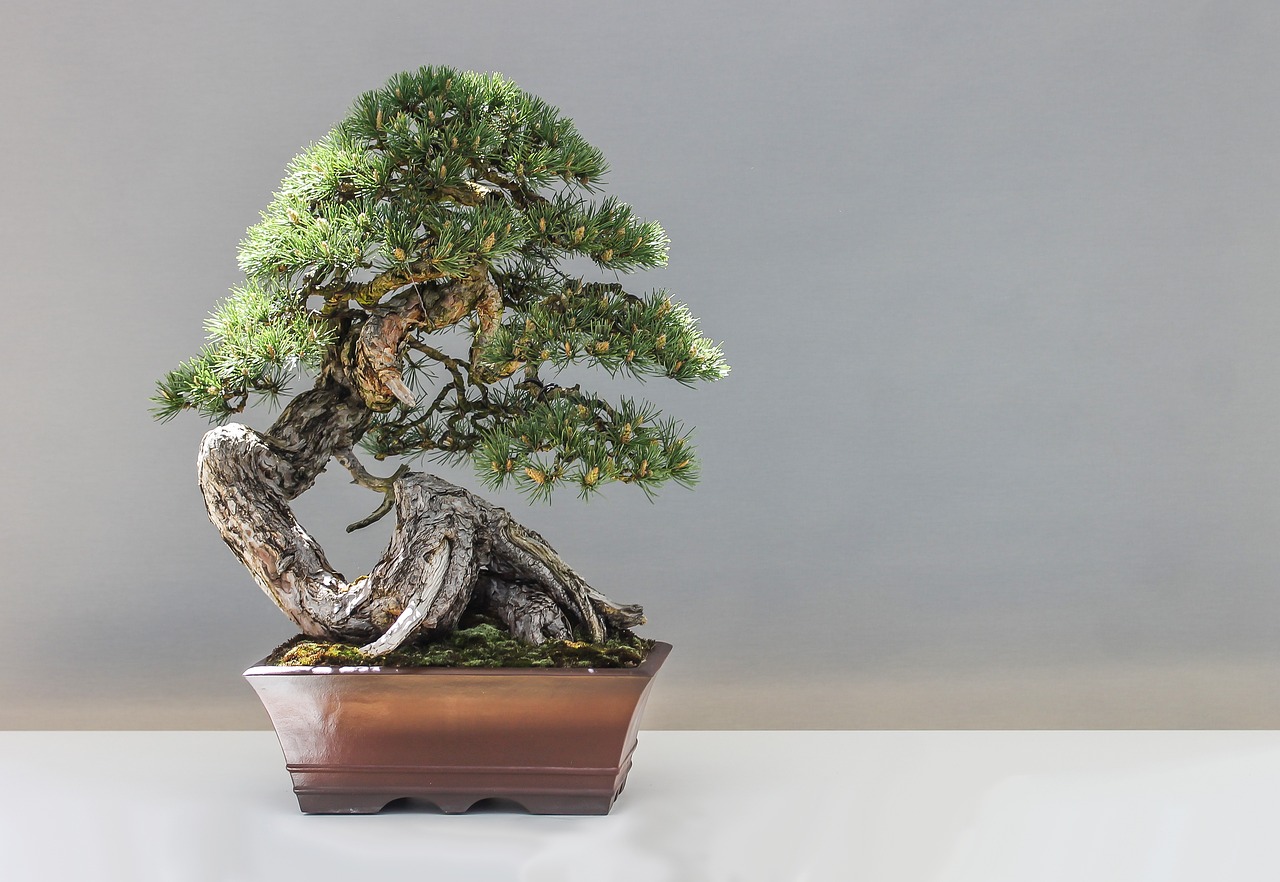
Understanding Bonsai Aesthetics
Bonsai aesthetics are truly a fascinating blend of art and nature, rooted deeply in Japanese culture. The essence of bonsai lies in its ability to evoke a sense of balance and harmony between the tree and its surroundings. When you look at a well-designed bonsai, it’s like gazing at a miniature landscape that tells a story. Each element, from the trunk to the leaves, is carefully curated to create a visual symphony that resonates with the observer.
One of the fundamental principles of bonsai aesthetics is the concept of asymmetry. Unlike traditional landscaping, where symmetry often reigns supreme, bonsai embraces the beauty of imperfection. This can be likened to the Japanese philosophy of wabi-sabi, which finds beauty in the transient and the incomplete. A bonsai tree, with its gnarled trunk and uneven branches, captures the essence of nature’s unpredictability. It’s a reminder that beauty often lies in the unexpected.
To truly appreciate bonsai aesthetics, one must also understand the importance of negative space. This refers to the empty areas around the bonsai that allow it to breathe and stand out. Think of it as the silence in a beautiful piece of music; it enhances the overall experience. The right amount of negative space can make a bonsai tree appear more dynamic and alive, inviting the viewer to engage with it on a deeper level.
Another critical aspect of bonsai aesthetics is the seasonal changes that influence the tree's appearance. Just as nature evolves, so too does a bonsai tree. In spring, vibrant blossoms may adorn its branches, while autumn can bring a stunning display of fiery foliage. This seasonal transformation adds a layer of intrigue, making bonsai a living art form that continuously evolves. It’s like watching a movie that never ends—there’s always something new to discover!
When designing a bonsai, one must also consider the scale and proportion of the tree in relation to its pot and environment. The pot should complement the tree, enhancing its beauty without overpowering it. A well-chosen pot can elevate a bonsai from ordinary to extraordinary, much like a beautiful frame enhances a piece of art. Here, colors and textures play a pivotal role, allowing for creative expression and personalization.
In conclusion, understanding bonsai aesthetics is about more than just cultivating a tree; it’s about creating a living masterpiece that reflects the beauty of nature. By embracing principles like asymmetry, negative space, seasonal changes, and thoughtful proportions, anyone can appreciate the intricate art of bonsai. So, whether you’re a seasoned enthusiast or a curious beginner, take the time to explore these aesthetics, and you might just find a deeper connection with nature and art.
- What is the significance of bonsai aesthetics?
It represents a blend of art and nature, emphasizing balance, harmony, and the beauty of imperfection. - How does seasonal change affect bonsai aesthetics?
Seasonal changes bring different colors and textures to the tree, adding depth and intrigue to its appearance. - Why is negative space important in bonsai design?
Negative space allows the bonsai to breathe and stand out, enhancing its visual impact. - What role does pot selection play in bonsai aesthetics?
The pot should complement the tree, enhancing its beauty without overpowering it, much like a frame for a painting.
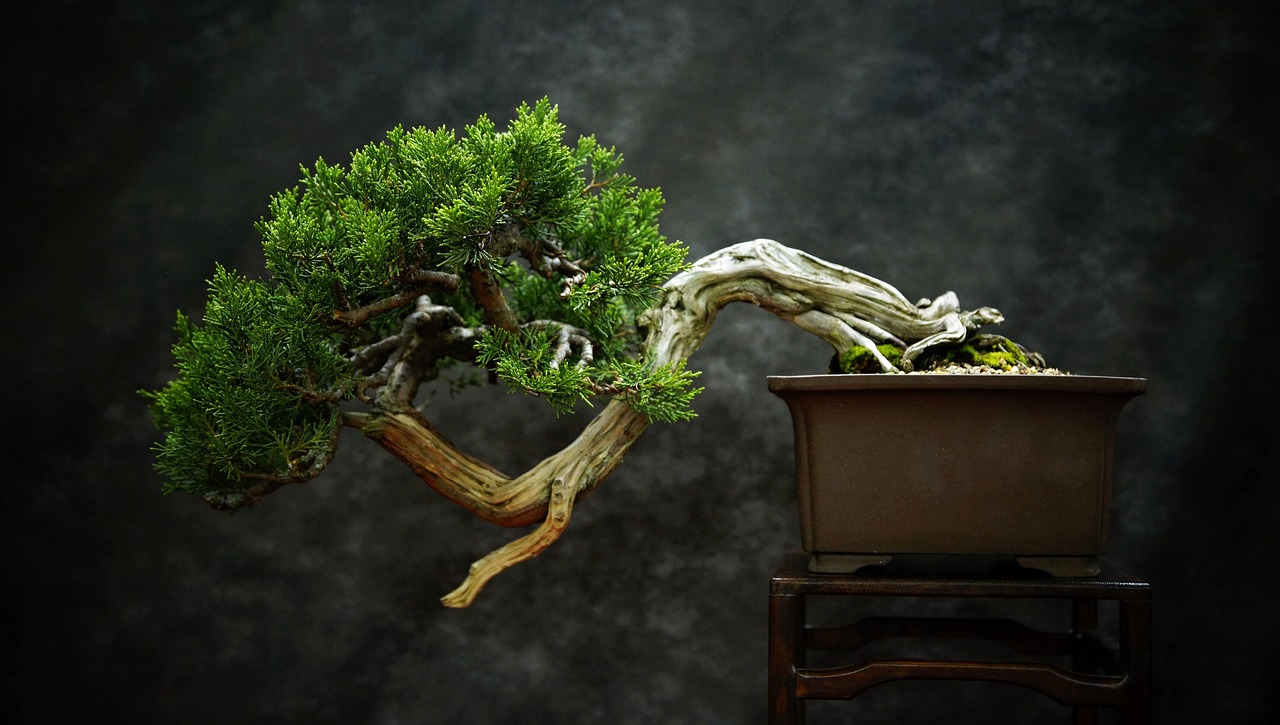
Choosing the Right Species
When it comes to bonsai cultivation, one of the most critical decisions you'll make is selecting the right tree species. This choice can significantly influence not just the aesthetic appeal of your bonsai, but also its health and longevity. It's much like choosing a pet; you want a species that fits your lifestyle, environment, and skill level. So, how do you go about making this important decision?
First off, it's essential to consider the environment in which you live. Different species thrive in various climates, and understanding these needs can save you a lot of heartache down the line. For instance, if you live in a region with harsh winters, you might want to choose a species that can withstand cold temperatures, like the Japanese Black Pine. Conversely, if you reside in a warmer climate, tropical species such as the Ficus or Jade tree may be more suitable.
Next, think about your skill level. Some species are more forgiving and easier to manage than others, making them perfect for beginners. For example, the Chinese Elm is known for its resilience and adaptability, making it a favorite among novice bonsai enthusiasts. On the other hand, if you're more experienced and looking for a challenge, you might want to explore species that require more intricate care, such as the Shimpaku Juniper.
Additionally, consider the growth habits of the species you are interested in. Each tree has unique characteristics that influence how it grows and how it can be shaped. For example, some species have a natural tendency to grow upright, while others may cascade or spread out. This is crucial when aligning your vision for the bonsai with the species' inherent traits. A well-matched species can make the design process much more enjoyable and rewarding.
Here's a quick comparison table to help you understand some popular bonsai species and their characteristics:
| Species | Climate Suitability | Skill Level | Growth Habit |
|---|---|---|---|
| Japanese Black Pine | Temperate | Intermediate | Upright |
| Chinese Elm | Temperate/Tropical | Beginner | Upright/Informal |
| Shimpaku Juniper | Temperate | Advanced | Cascade |
| Ficus | Tropical | Beginner | Upright/Informal |
| Jade Tree | Tropical | Beginner | Upright |
Ultimately, choosing the right species is about finding what resonates with you. It's a personal journey that reflects your tastes, your environment, and your level of commitment. So take your time, do your research, and don't hesitate to reach out to local bonsai clubs or experts for advice. The right choice will not only enhance your bonsai experience but will also lead to a flourishing and beautiful tree that you can cherish for years to come.
Q: What is the best bonsai species for beginners?
A: The Chinese Elm and Ficus are excellent choices for beginners due to their resilience and adaptability.
Q: Can I grow bonsai indoors?
A: Yes, many species, particularly tropical ones like the Ficus and Jade tree, thrive indoors.
Q: How long does it take to grow a bonsai?
A: Growing a bonsai can take several years, depending on the species and the techniques used.
Q: Do bonsai trees need special soil?
A: Yes, bonsai trees require well-draining soil that retains some moisture without becoming waterlogged.
Q: How often should I water my bonsai?
A: Watering frequency depends on species, pot size, and environmental conditions, but generally, check the soil moisture regularly.
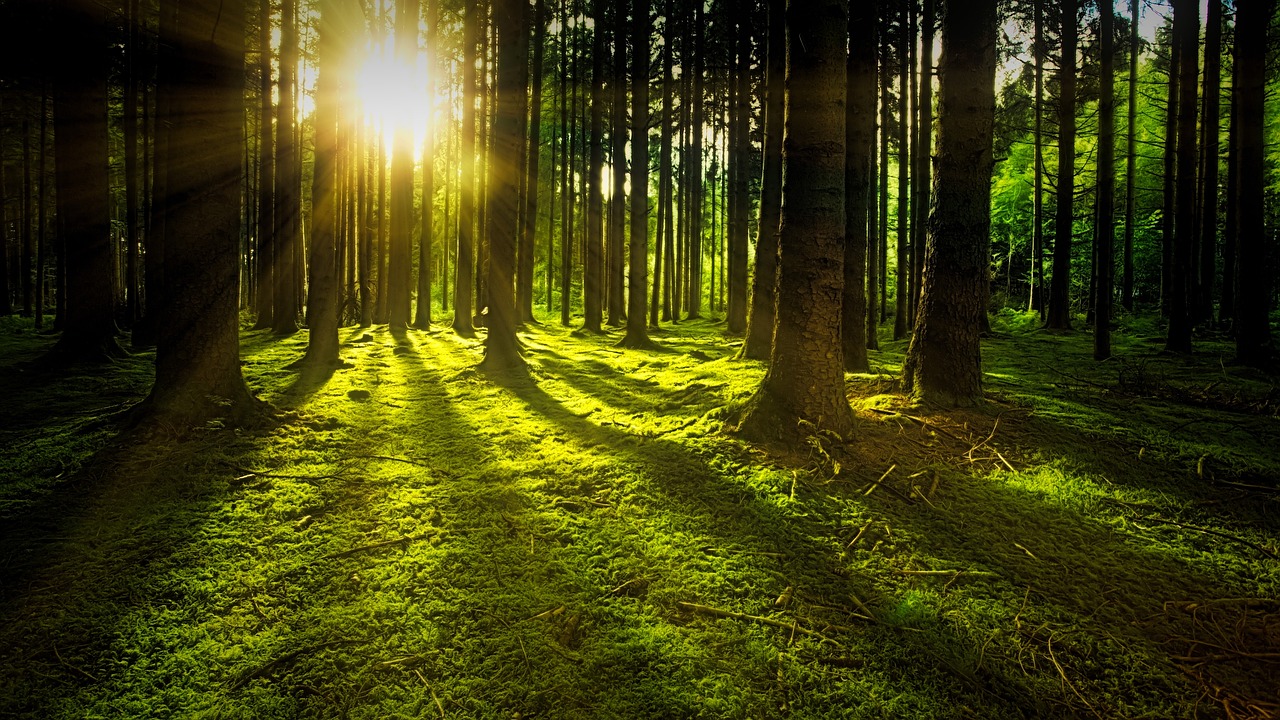
Native vs. Exotic Species
When diving into the world of bonsai, one of the most intriguing debates revolves around native versus exotic species. Each category brings its own set of advantages and challenges, making the choice between them crucial for both novice and experienced bonsai enthusiasts. Native species, as the name suggests, are those that are indigenous to a particular region. They often come with an inherent adaptability to local climates and soil types, which can simplify the care process significantly. For example, if you live in an area with a hot, dry climate, choosing a native species that thrives under such conditions can lead to a more successful bonsai experience.
On the other hand, exotic species are those that originate from different parts of the world. These trees can introduce unique aesthetics and characteristics that may not be found in local varieties. However, they often require more specialized care to thrive. For instance, an exotic bonsai might need specific humidity levels or temperatures that are not naturally present in your environment. This can make the cultivation of these species both a rewarding challenge and a potential source of frustration. As you explore your options, consider the following factors:
- Adaptability: Native species generally adapt better to local conditions.
- Aesthetic Appeal: Exotic species can offer unique visual traits that enhance your collection.
- Care Requirements: Native species often require less specialized care compared to their exotic counterparts.
- Availability: Native species may be easier to source locally, while exotic varieties might require special orders.
Ultimately, the decision between native and exotic species boils down to your personal preferences and the environment in which you will be growing your bonsai. If you're looking for a low-maintenance option that fits seamlessly into your local ecosystem, native species might be the way to go. However, if you’re drawn to the allure of exotic trees and are willing to put in the extra effort for their care, you might find immense satisfaction in cultivating these unique specimens.
As you weigh your options, consider creating a small table to compare some popular native and exotic species:
| Species Type | Common Species | Care Requirements | Adaptability |
|---|---|---|---|
| Native | Ponderosa Pine, Japanese Maple | Moderate | High |
| Exotic | Ficus, Bougainvillea | High | Moderate |
In conclusion, whether you choose a native or an exotic species, understanding their unique needs and characteristics will enhance your bonsai journey. Just like choosing between a classic novel and a contemporary bestseller, each option offers its own story and experience. So, which path will you take in your bonsai adventure?
Here are some common questions that many bonsai enthusiasts have when considering native versus exotic species:
- Can I grow an exotic bonsai in a native climate? Yes, but you may need to create specific conditions to ensure its health.
- Are native species easier to care for? Generally, yes, as they are adapted to local conditions.
- Which species are best for beginners? Native species are often recommended for beginners due to their adaptability.
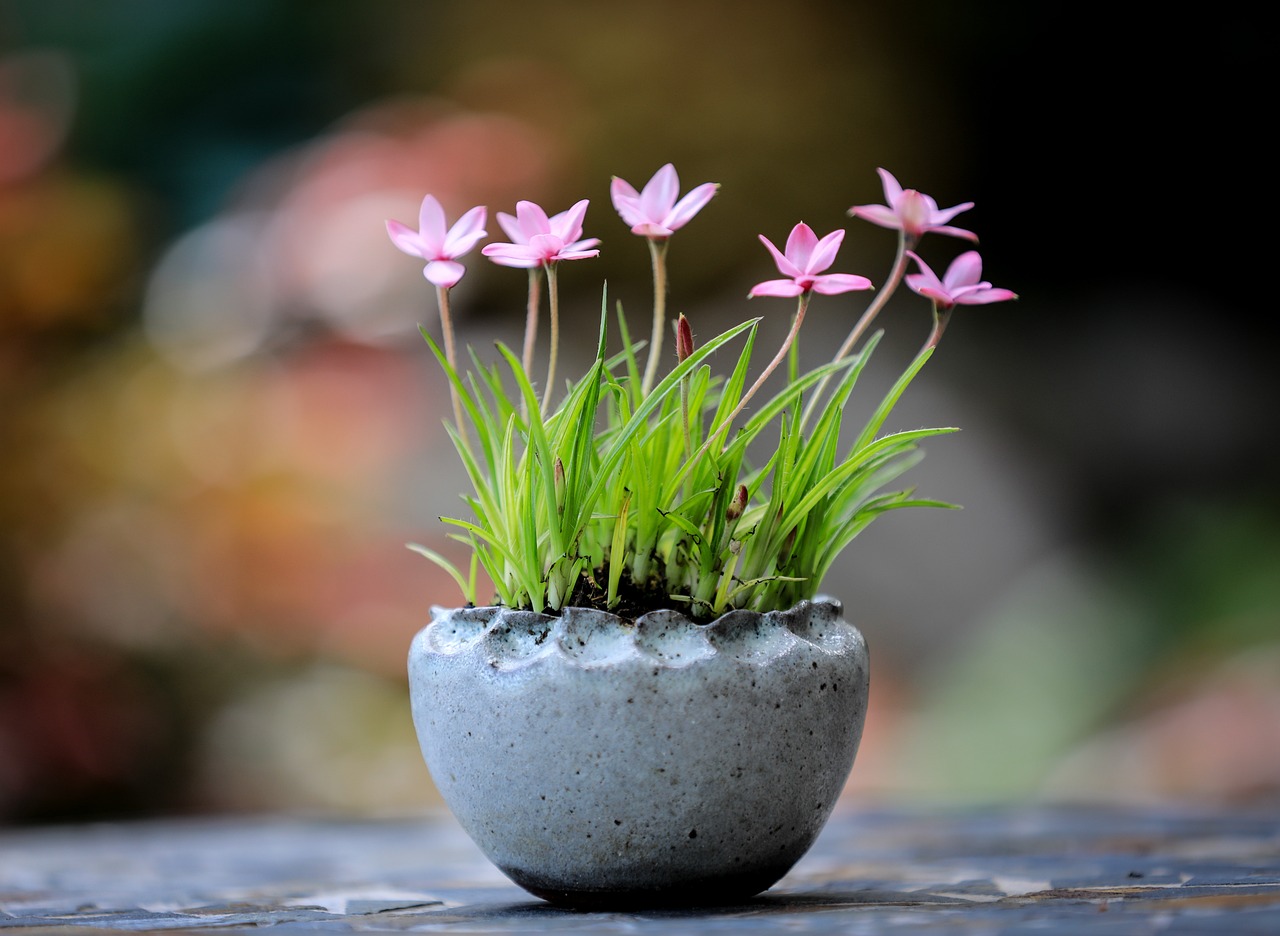
Climate Considerations
When it comes to cultivating a thriving bonsai, understanding is absolutely essential. Just like us, bonsai trees have their own preferences when it comes to temperature, humidity, and seasonal changes. Ignoring these factors can lead to unhealthy trees or, worse, the demise of your beloved bonsai. So, let’s dive into the nitty-gritty of what makes the climate a crucial player in your bonsai journey!
First and foremost, every bonsai species has its unique climate requirements. For instance, some trees thrive in tropical environments, while others prefer a more temperate climate. It’s like choosing the right outfit for the weather; you wouldn’t wear a winter coat in the summer, right? Similarly, selecting a bonsai species that aligns with your local climate is vital. This means considering factors like:
- Temperature: Most bonsai species have a specific temperature range that promotes optimal growth. For example, tropical species prefer warm temperatures year-round, while deciduous species need a cold winter dormancy.
- Humidity: Bonsai trees often require higher humidity levels, especially those from tropical regions. In arid climates, you might need to mist your bonsai or use humidity trays to keep them happy.
- Seasonal Changes: Understanding the seasonal changes in your area is crucial. Some species need a period of dormancy in winter, while others may require protection from frost.
To illustrate, let’s take a look at a simple table that outlines a few popular bonsai species along with their preferred climate conditions:
| Bonsai Species | Preferred Climate | Temperature Range (°C) |
|---|---|---|
| Ficus | Tropical | 15-30 |
| Pine | Temperate | -10 to 25 |
| Maple | Temperate | -5 to 30 |
| Juniper | Subtropical | -10 to 30 |
As you can see, the climate plays a pivotal role in determining which bonsai species will flourish in your care. It’s not just about picking a pretty tree; it’s about creating a harmonious environment that mimics its natural habitat. Additionally, adapting your care practices to suit the climate can make all the difference. For instance, during hot summer months, you might need to water your bonsai more frequently, while in winter, you may have to reduce watering to avoid root rot.
In conclusion, being aware of climate considerations is a game-changer for bonsai enthusiasts. By choosing the right species for your environment and adjusting your care routine accordingly, you’ll pave the way for a vibrant, healthy bonsai that not only survives but thrives! So, before you dive headfirst into the world of bonsai, take a moment to consider the climate and how it affects your little green companion.
- What is the best climate for bonsai? It varies by species; tropical species prefer warm, humid climates, while temperate species need cold winters.
- Can I grow bonsai indoors? Yes, many species can thrive indoors, but they still require adequate light and humidity.
- How often should I water my bonsai? Watering frequency depends on the species and climate; always check the soil moisture before watering.
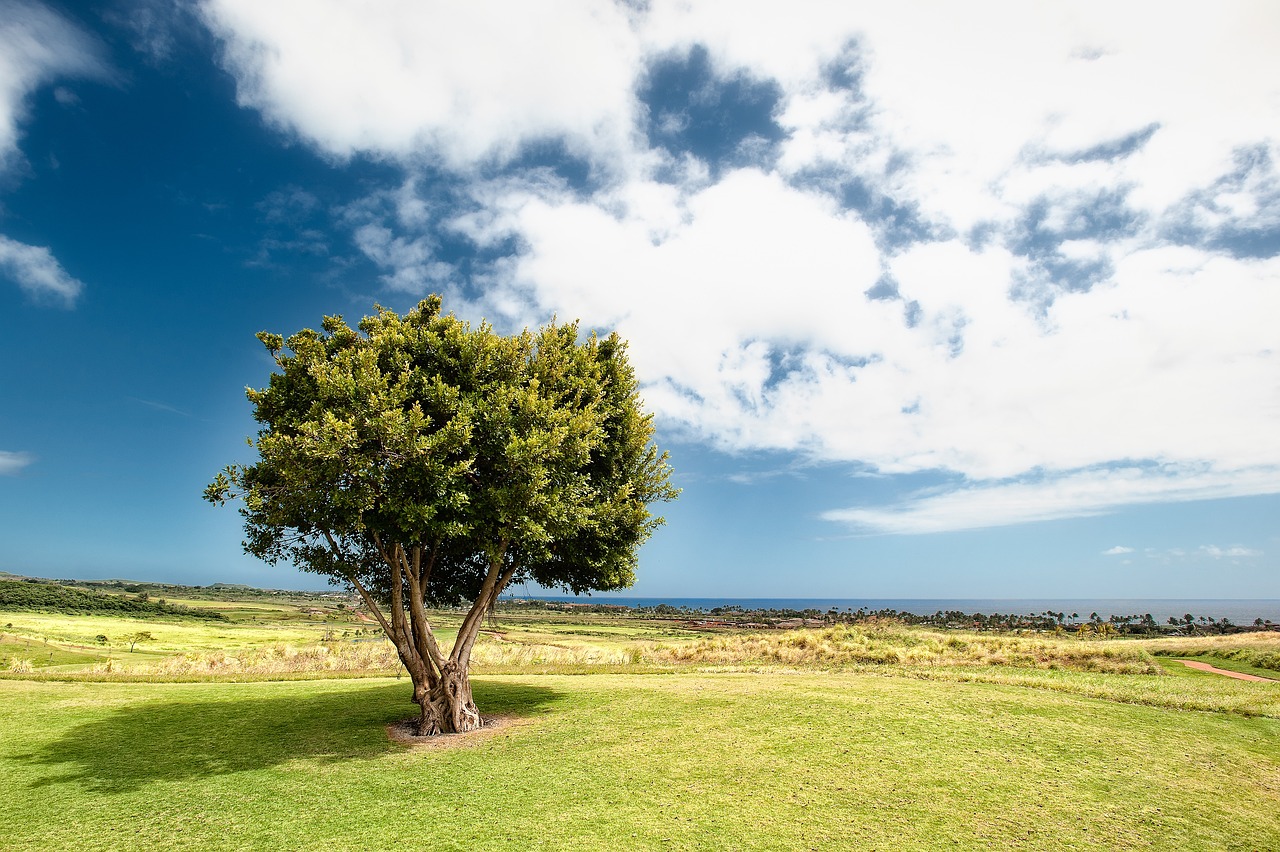
Growth Habits and Styles
When it comes to bonsai, understanding the growth habits of various species is essential for achieving the desired aesthetic appeal. Each tree species has its own unique way of growing, which can greatly influence how you shape and style your bonsai. For instance, some trees naturally grow tall and straight, making them ideal for the formal upright style, while others have a more twisted and gnarled appearance, perfect for the informal upright or windswept styles.
Additionally, the growth rate of a species can vary significantly. Fast-growing species, like the Ficus, require more frequent pruning and shaping to maintain their form, whereas slower-growing species, such as Pines, might need less frequent intervention. This variance in growth habits not only affects the time you’ll spend caring for your bonsai but also the techniques you’ll need to employ.
Some common growth habits to consider include:
- Upright Growth: Trees that grow straight up, such as the Japanese Maple, are perfect for creating a classic bonsai appearance.
- Spreading Growth: Species like the Juniper tend to spread outwards, allowing for unique styling opportunities.
- Cascading Growth: Trees that grow downwards, like the Cascade Juniper, can create stunning visual effects in a bonsai display.
Moreover, understanding these growth habits allows you to align them with your chosen bonsai style. For example, if you’re aiming for a cascade style, you’ll want to select a species that naturally has a trailing growth habit, as this will make it easier to achieve the desired effect. Conversely, if you prefer a more traditional look, opting for a species that grows upright will serve you well.
In addition to species characteristics, the environment plays a critical role in shaping growth habits. Factors such as light exposure, humidity, and soil type can either enhance or hinder a tree's natural growth pattern. For instance, a tree kept in a low-light environment may not develop as robustly as one receiving ample sunlight, leading to a less desirable bonsai shape.
Ultimately, by paying attention to these growth habits and understanding how they align with different bonsai styles, you can create a beautiful and harmonious display that reflects both the natural beauty of the tree and your personal artistic vision. Remember, bonsai is not just about the end result; it’s a journey of growth and discovery that requires patience and care.
Q: What is the best species for beginners?
A: For beginners, species like Ficus or Chinese Elm are often recommended due to their resilience and adaptability.
Q: How often should I prune my bonsai?
A: Pruning frequency depends on the species and growth rate. Generally, you may need to prune every few weeks during the growing season.
Q: Can I keep my bonsai indoors?
A: Yes, many species can thrive indoors, but they still require adequate light and humidity to remain healthy.
Q: What type of soil is best for bonsai?
A: A well-draining soil mix is crucial. Look for bonsai-specific soil or create your own with components like akadama, pumice, and lava rock.
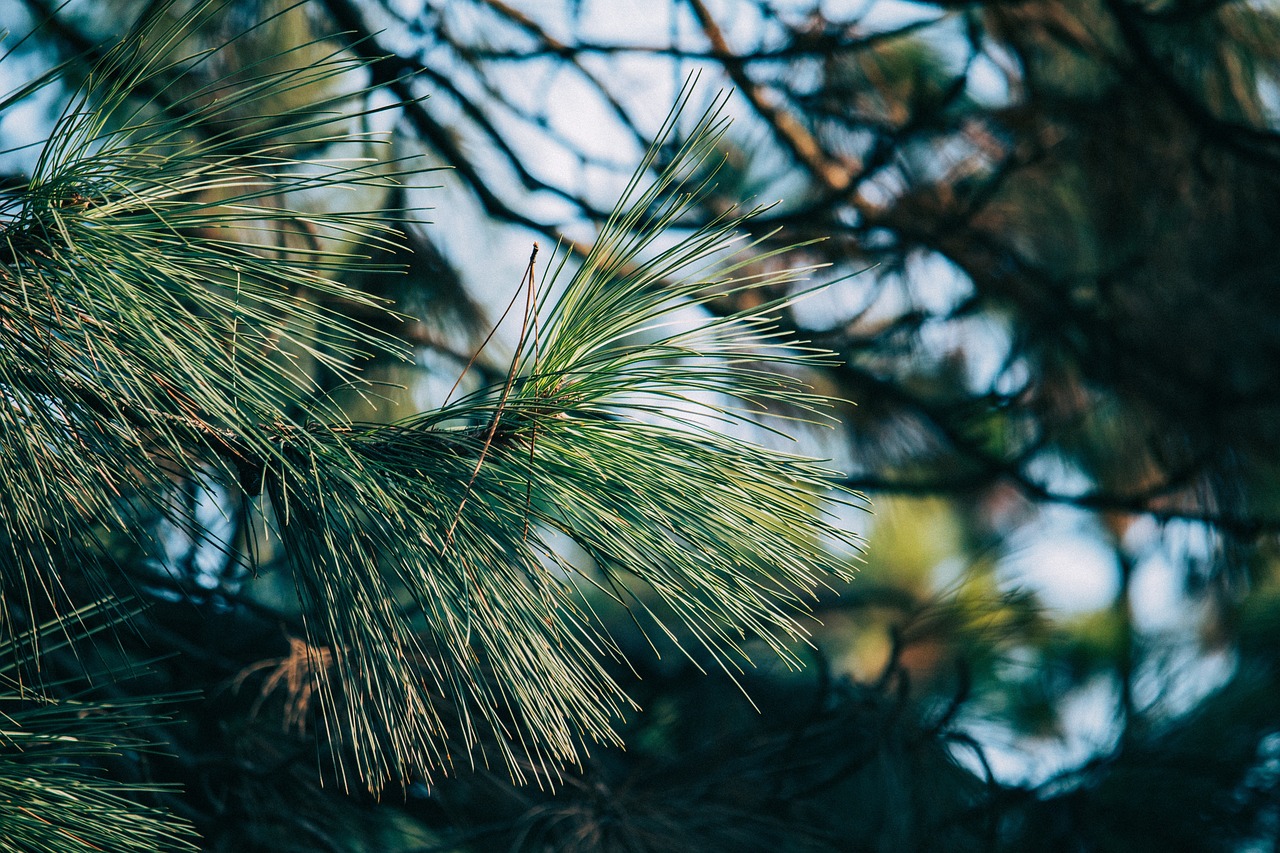
Common Bonsai Styles
Bonsai is not just about growing trees in pots; it's an intricate art form that reflects deep cultural significance and personal expression. Each bonsai style tells a story, capturing the essence of nature while showcasing the unique characteristics of the tree. Let's dive into some of the most common bonsai styles that enthusiasts cherish and cultivate.
The Formal Upright style, known as Chokkan, is one of the most traditional forms in bonsai. It features a straight trunk that rises vertically, tapering as it ascends. This style symbolizes strength and resilience, often evoking the image of towering trees in nature. The branches typically grow horizontally, creating a balanced and harmonious silhouette. Think of it as the classic superhero of bonsai trees—standing tall and proud!
In contrast, the Informal Upright style, or Moyogi, introduces a more relaxed and natural look. The trunk curves gracefully, resembling a tree that has grown in response to the elements. This style embodies the beauty of imperfection, as it mimics the way trees adapt to their environment. Imagine a dancer swaying to the rhythm of the wind—this is the essence of the Informal Upright bonsai.
Another fascinating style is the Cascade or Kengai, where the tree appears to cascade downwards, often resembling a waterfall. This style requires careful training and pruning to achieve the desired effect, giving the impression that the tree is clinging to a cliff. It's a breathtaking representation of nature's power and beauty, making it a favorite among bonsai artists. Picture a majestic waterfall, and you can envision the elegance of the Cascade bonsai.
For those who appreciate a more dramatic flair, the Literati or Bunjin style is perfect. This style is characterized by its tall, slender trunks and minimal foliage, often evoking a sense of loneliness or solitude. It tells a story of survival in harsh conditions, where the tree has endured and thrived against the odds. Think of it as the lone wolf of the bonsai world, standing defiant against the elements.
Additionally, we have the Forest or Yose-ue style, which involves planting multiple trees together to create a miniature forest. This style emphasizes community and interconnectedness, showcasing how trees support each other in nature. It's like a family gathering where every member plays a vital role in the overall harmony. Imagine walking through a serene forest, and you'll understand the beauty of this bonsai style.
Lastly, the Windswept or Fukinagashi style captures the essence of trees shaped by strong winds. The branches lean dramatically to one side, showcasing the tree's resilience and adaptability. It’s a stunning representation of nature's forces, reminding us that even in adversity, beauty can emerge. Think of a flag waving in the wind—this style embodies that same spirit of defiance and grace.
In summary, bonsai styles are not just about aesthetics; they reflect the relationship between the tree and its environment, the artist's vision, and the philosophy of nature itself. Whether you prefer the strength of the Formal Upright or the elegance of the Cascade, each style offers a unique way to connect with the beauty of nature. So, which style resonates with you? Embrace the journey of bonsai cultivation, and let your creativity flourish!
- What is the best bonsai style for beginners?
For beginners, the Informal Upright style is often recommended due to its forgiving nature and adaptability. It allows for creative expression while being relatively easy to maintain.
- How long does it take to grow a bonsai tree?
The time it takes to grow a bonsai tree varies greatly depending on the species and the care provided. Generally, it can take several years to shape a bonsai tree into its desired style.
- Can I create my own bonsai style?
Absolutely! Bonsai is a personal art form, and many enthusiasts develop their own unique styles. Feel free to experiment and let your creativity shine!
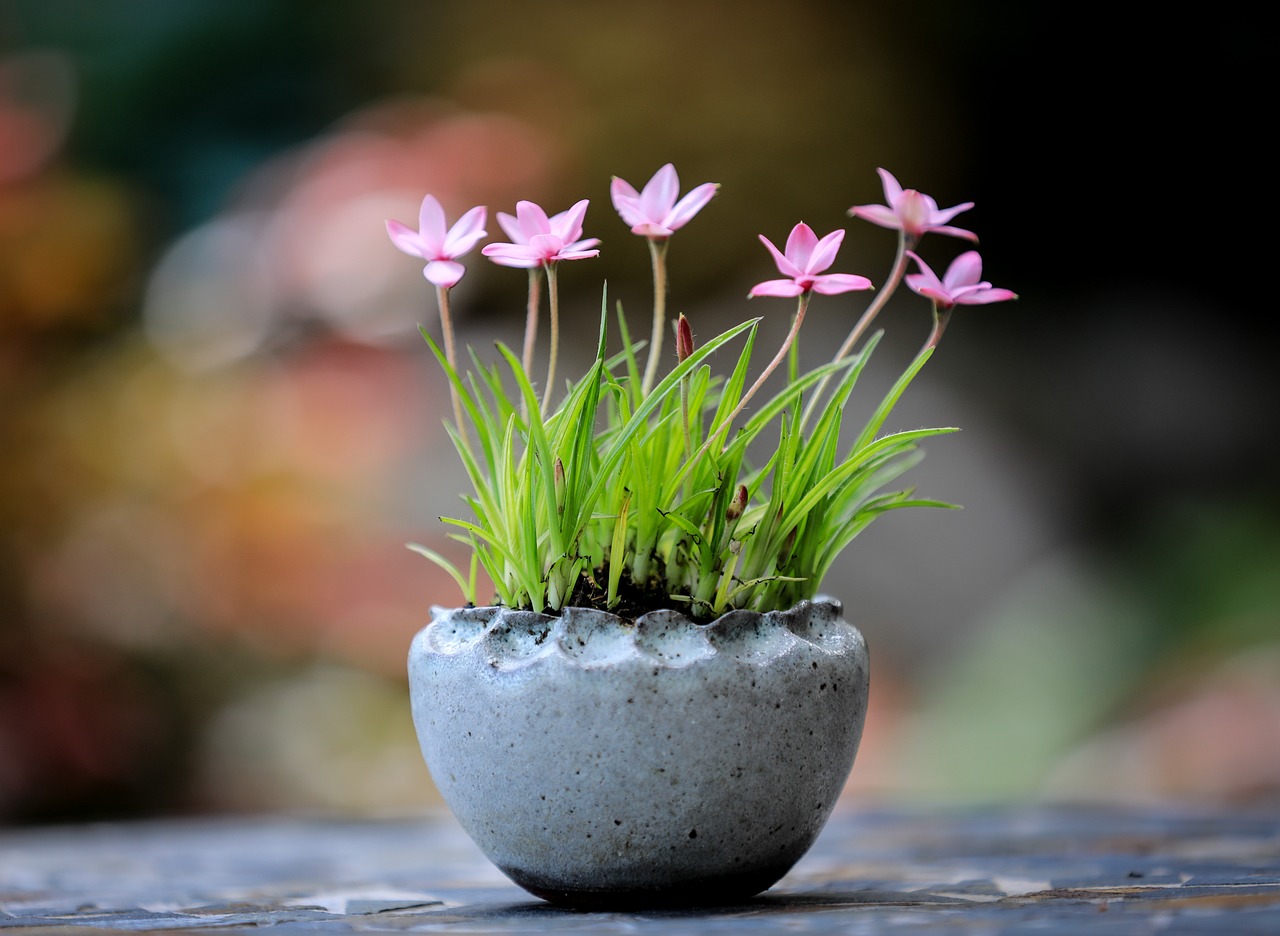
Essential Care Techniques
When it comes to nurturing bonsai trees, understanding is crucial. These techniques not only help maintain the health of your bonsai but also enhance its beauty and longevity. Think of your bonsai as a delicate piece of art that requires your attention and care, much like a painter nurturing their masterpiece. Each aspect of care, from watering to pruning, plays a vital role in ensuring your bonsai thrives.
One of the most important aspects of bonsai care is watering. Unlike regular houseplants, bonsai trees are often grown in small pots, which means they can dry out quickly. It's essential to monitor the moisture level of the soil. A good rule of thumb is to check the soil daily, especially during hot weather. If the topsoil feels dry to the touch, it’s time to water. However, overwatering can be just as harmful, leading to root rot. Therefore, finding that perfect balance is key. Consider using a moisture meter for more precise readings, especially if you’re a beginner.
Next on the list is fertilizing. Bonsai trees require regular feeding to replenish nutrients in the soil. A balanced fertilizer can do wonders for your tree’s health. You should fertilize every few weeks during the growing season, which typically runs from spring to early autumn. However, the type of fertilizer you use can depend on the species of your bonsai. For instance, deciduous trees may benefit from a nitrogen-rich fertilizer, while conifers might thrive on one higher in potassium. Always dilute the fertilizer according to the instructions to avoid burning the roots.
Another essential technique is pruning. Pruning is not just about keeping your bonsai looking good; it’s about encouraging healthy growth. Regular pruning helps maintain the desired shape and size of your bonsai while promoting new growth. The best time to prune is during the growing season when the tree is actively developing. Use sharp, clean tools to make precise cuts, and always remove dead or unhealthy branches. This practice not only improves airflow but also allows more sunlight to reach the inner parts of the tree.
In addition to pruning, wiring is an art form in itself. Wiring helps you shape your bonsai by gently bending the branches into the desired position. It’s important to use the right type of wire—aluminum or copper—depending on the thickness of the branch. Apply the wire carefully to avoid damaging the bark, and remember to remove it after a few months to prevent it from cutting into the wood as the tree grows. This technique can transform your bonsai’s appearance, giving it the character and style that reflects your vision.
To summarize the essential care techniques, here’s a quick table:
| Care Technique | Details |
|---|---|
| Watering | Check daily; water when the topsoil is dry. |
| Fertilizing | Feed every few weeks during the growing season. |
| Pruning | Trim during the growing season; remove unhealthy branches. |
| Wiring | Shape branches with wire; remove after a few months. |
In conclusion, mastering these essential care techniques will not only enhance the beauty of your bonsai but will also deepen your connection with this ancient art form. Just like a gardener tending to their flowers, your efforts will yield a stunning display of nature’s elegance. So, roll up your sleeves and dive into the rewarding world of bonsai care!
- How often should I water my bonsai? Watering frequency depends on the species and climate, but generally, check the soil daily.
- What type of fertilizer is best for bonsai? A balanced fertilizer is ideal, but the specific needs can vary by species.
- When is the best time to prune my bonsai? The growing season, typically spring to early autumn, is the best time for pruning.
- Can I wire my bonsai at any time? It's best to wire during the growing season, but remember to remove the wire after a few months.
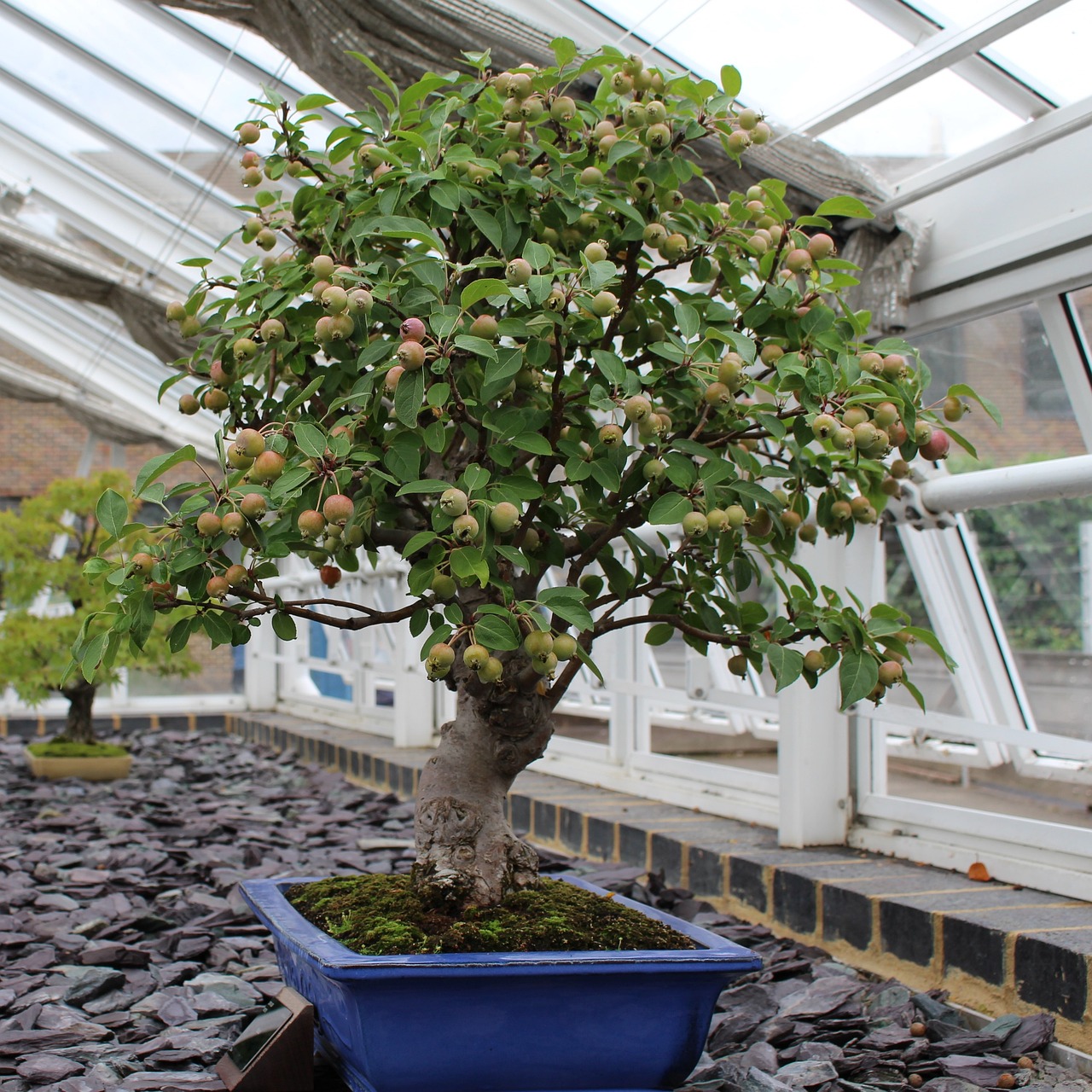
Watering Practices
When it comes to bonsai care, watering is one of the most critical aspects that can make or break your little tree's health. Think of it as the lifeblood of your bonsai—too little and it wilts, too much and it drowns. The key is finding the perfect balance. So, how do you know when to water your bonsai? Well, it often depends on several factors, including the species of the tree, the type of soil, the pot size, and even the environmental conditions.
First off, you’ll want to familiarize yourself with the soil moisture. A good rule of thumb is to check the top inch of soil. If it feels dry to the touch, it’s time to give your bonsai a drink. However, don’t just pour water in without a thought. Instead, consider the following:
- Water Quality: Always use clean, chlorine-free water. Rainwater is ideal, but if that’s not an option, let tap water sit for 24 hours to allow chlorine to evaporate.
- Watering Technique: Water your bonsai thoroughly until you see it draining from the bottom of the pot. This ensures that all the roots are getting the moisture they need.
- Seasonal Adjustments: In the warmer months, your bonsai will likely need more frequent watering compared to the colder months when growth slows down.
Now, let’s talk about pot type. If you’ve chosen a ceramic pot, it retains moisture longer than a plastic pot, which dries out quicker. Therefore, you might need to adjust your watering schedule based on the pot material. Additionally, the size of the pot plays a role; smaller pots dry out faster than larger ones, so keep an eye on them.
Moreover, the climate in which you live can have a significant effect on your watering practices. In a humid environment, your bonsai may require less frequent watering, while in a dry or windy area, it might need more. Always be observant and adjust accordingly. For instance, if you notice the leaves starting to curl or turn yellow, it could be a sign of either under-watering or over-watering. These symptoms can be tricky, so it’s essential to pay close attention to your bonsai's cues.
Lastly, remember that watering is not just about quantity but also about timing. Early morning is often the best time to water your bonsai. This allows the tree to absorb the moisture before the heat of the day sets in. Watering in the evening can lead to prolonged dampness, which can encourage root rot. In essence, think of your bonsai as a delicate ecosystem that needs just the right amount of water at the right time.
In summary, mastering the art of watering your bonsai is an ongoing journey. It requires observation, patience, and a bit of intuition. But once you get the hang of it, you’ll find that your bonsai will thrive, becoming a stunning centerpiece in your home or garden. So, are you ready to dive into the world of bonsai watering?
Q: How often should I water my bonsai?
A: It varies based on species, pot size, and environmental conditions. Always check the top inch of soil; if it's dry, it's time to water.
Q: Can I use tap water for my bonsai?
A: Yes, but it's best to let it sit for 24 hours to allow chlorine to evaporate. Rainwater is preferable.
Q: What should I do if my bonsai leaves are turning yellow?
A: Yellow leaves can indicate over-watering or under-watering. Check your watering routine and soil moisture.
Q: Is there a best time of day to water?
A: Early morning is ideal, as it allows the tree to absorb moisture before the heat of the day.

Pruning and Wiring
Pruning and wiring are two of the most essential techniques in bonsai cultivation, acting as the sculptor's tools that help transform a simple tree into a stunning work of art. Imagine your bonsai as a blank canvas; without the right strokes, it may not reach its full potential. Pruning involves the careful removal of branches and foliage to shape the tree, while wiring is the method used to guide the growth of branches into desired positions. Both techniques require a delicate touch and a keen eye for detail, as they not only enhance the aesthetic appeal but also promote the overall health of the tree.
When it comes to pruning, timing is everything. Ideally, you want to prune during the tree's active growing season, which varies depending on the species. For many deciduous trees, late spring is the perfect time, as the tree is full of energy and can quickly heal from cuts. On the other hand, conifers can often be pruned in late winter or early spring. The goal of pruning is to remove any dead or unhealthy branches, as well as to thin out crowded areas to allow light and air to circulate. This not only improves the tree’s appearance but also reduces the risk of diseases.
Wiring, on the other hand, is a technique that requires a bit more finesse. It involves wrapping aluminum or copper wire around branches to bend and shape them into the desired position. Think of wiring as a gentle embrace that guides the branches without constraining them. The key to successful wiring is to apply it carefully to avoid damaging the bark. You should wrap the wire at a 45-degree angle, ensuring that it’s snug but not too tight. As the tree grows, it’s crucial to monitor the wire and remove it before it starts to dig into the bark, which can cause permanent damage.
To help you visualize the process, here’s a simple table outlining the key differences between pruning and wiring:
| Technique | Purpose | Best Time |
|---|---|---|
| Pruning | Shaping and maintaining health | Active growing season |
| Wiring | Guiding branch position | Before or during active growth |
Both pruning and wiring not only enhance the beauty of your bonsai but also contribute to its longevity. It’s important to approach these techniques with patience and care. Think of it as a relationship; the more attention and love you give, the more your bonsai will flourish. Remember, bonsai cultivation is not just about aesthetics; it's about nurturing a living organism and understanding its needs. So, take your time, observe your tree, and enjoy the rewarding journey of bonsai care.
- How often should I prune my bonsai tree? It depends on the species and growth rate, but generally, you should prune during the active growing season, which is usually once a year.
- Can I wire my bonsai anytime? While you can wire at various times, it's best to do so during the growing season when the branches are more pliable.
- What type of wire should I use for bonsai? Aluminum wire is commonly used because it’s lightweight and easy to manipulate, but copper wire is also an option for more rigid branches.
- How do I know when to remove the wire? Check regularly for signs of the wire digging into the bark. It’s best to remove it once the branch holds its shape, usually within a few months.
Frequently Asked Questions
- What is bonsai?
Bonsai is the art of cultivating miniature trees that mimic the shape and style of full-sized trees. It's not just about growing small trees; it's about creating a living work of art that reflects nature's beauty.
- How do I choose the right species for my bonsai?
Choosing the right species depends on your environment, skill level, and personal preference. Some popular species for beginners include Ficus, Juniper, and Pine. Consider factors like climate and growth habits to find the perfect match!
- What are the common bonsai styles?
There are several popular bonsai styles, including Formal Upright, Informal Upright, Cascade, and Forest. Each style has its own unique characteristics and aesthetic appeal, allowing you to express your creativity!
- How often should I water my bonsai?
Watering frequency varies based on species, pot type, and environmental conditions. A good rule of thumb is to check the soil moisture regularly. If the top inch feels dry, it's time to water!
- What is the best time to prune my bonsai?
The best time to prune depends on the species. Generally, late winter or early spring is ideal for most trees, as it encourages healthy growth. Always use clean, sharp tools for the best results!
- Do I need to fertilize my bonsai?
Yes! Fertilizing your bonsai is essential for providing the nutrients it needs to thrive. Use a balanced fertilizer during the growing season, and adjust based on the specific needs of your tree.
- Can I grow bonsai indoors?
Absolutely! Many bonsai species thrive indoors, but they require adequate light and humidity. Consider species like Ficus or Chinese Elm for indoor cultivation.
- What tools do I need for bonsai care?
Basic bonsai care tools include pruning shears, wire cutters, bonsai wire, and a root rake. Investing in quality tools will make your bonsai maintenance much easier and more enjoyable!
- How can I shape my bonsai tree?
Shaping your bonsai involves techniques like pruning and wiring. Pruning helps maintain the desired size and shape, while wiring allows you to bend and position branches to create your desired aesthetic.
- What should I do if my bonsai leaves are turning yellow?
Yellowing leaves can indicate overwatering, underwatering, or nutrient deficiencies. Check your watering schedule and consider adjusting your fertilization routine to address the issue.



















